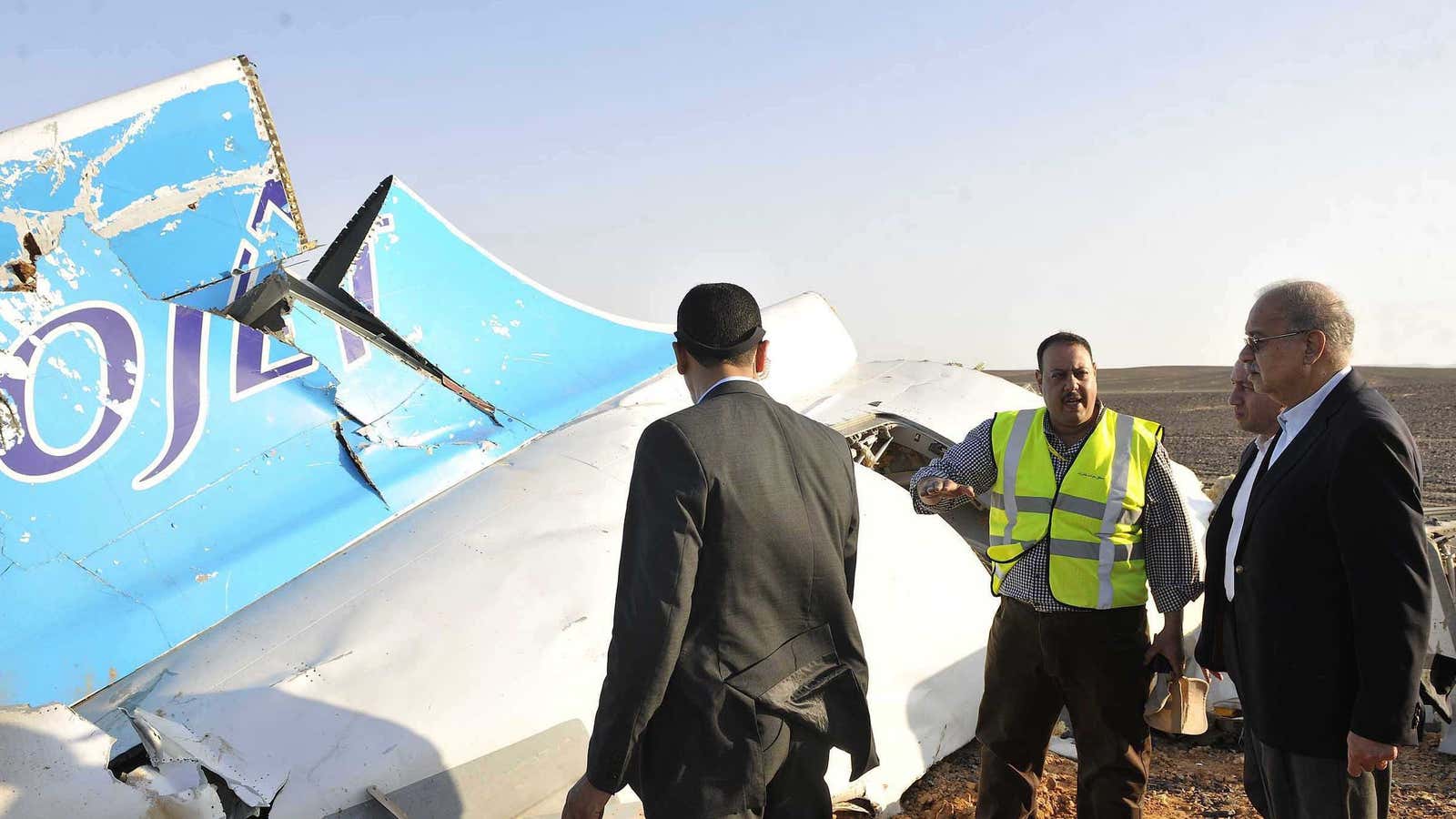A Russian plane headed for St Petersburg crashed in Egypt’s Sinai Peninsula yesterday (Oct. 31), killing all 224 people on board, including 17 children.
The airline carrier, Metrojet, said that the Airbus A321 had passed routine checks before the flight and underwent factory maintenance last year. The two “black box” data recorders have been retrieved by Russian officials, and will be analyzed for clues, but initial data from flight-tracking site FlightRadar24 suggested that the plane went into a steep and rapid dive before crashing into a mountainous region of the desert.
A few hours after the crash, a local ISIL group in Egypt said it was responsible, although Russian and Egyptian officials quickly dismissed the claim. Russian forces are currently engaged in airstrikes in Syria against ISIL and other groups opposed to the regime of Bashar al-Assad.
“They can put out whatever statements they want but there is no proof at this point that terrorists were responsible for this plane crash,”Mohamed Samir, a spokesman for the Egyptian army, told The Guardian.
“This information cannot be considered reliable,” said Maxim Sokolov, Russia’s Transport Minister, in a statement. “We are in a close contact with our Egyptian colleagues, with the aviation authorities of this country. At the moment, they have no information that would confirm such fabrications.”
Is the Islamist extremist group capable of shooting down a passenger jet? Yes, but only under very limited circumstances. And based on the plane’s flight path and the reach of anti-aircraft weapons that ISIL is known to possess, the data at this point seems to cast doubt on the ISIL claim:
- The US aviation regulator warned in March that airlines flying over the Sinai peninsula were at “potential risk from hazards associated with extremist activities, which pose a significant risk to the safe operation of U.S. civil aviation.”
- ISIL is known to have manpad missiles (for “man-portable air defense system”), and the branch of the Islamist extremist group based in Egypt’s Sinai desert shot down an Egyptian army helicopter last year.
- But shoulder-mounted manpads have a maximum range of 20,000 ft (6,000 m), according to the New York Times, and the Russian flight was last seen at 31,000 ft. Manpads are most effectively against commercial jets when they are fired at planes while taking off or landing. The US advised airlines to stay above 26,000 ft in the region.
- Egypt’s former minister of civil aviation, Wail al-Madawi, told RT that, given the plane’s altitude, it’s “out of the question” to speculate whether terrorists are at fault. “It requires some very significant resources: One would need search radars, radars to locate the plane, radars to control the fire. Only a state can have such resources, no militant group like that can.”
- The Russian-made Buk anti-aircraft missile that destroyed Malaysian Airlines flight 17 last year is a much more sophisticated, vehicle-borne weapon, and is fully capable of taking down a plane at cruising altitude. But there is no indication that ISIL has obtained this class of anti-aircraft weaponry.
- It still remains theoretically possible that ISIL could have managed to get a bomb onto the plane, rather than shoot it down from the ground.
Nevertheless, commercial airliners are taking no chances: Emirates, Lufthansa, and Air France said they would not fly over Sinai until the cause of the Metrojet crash was known.
